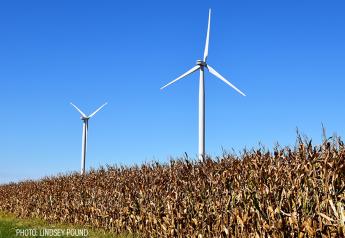Argentina aims for $5 bln investment in renewable energy by 2018

Argentina aims to rake in $5 billion in investments in renewable energy by 2018 with the goal of reducing its energy deficit, a government official told Reuters, as hopes for near-term increased output from the Vaca Muerta shale field fade.
The South American country has ideal conditions for producing renewable energy, experts say: vast, wind-swept plains in Patagonia and sun-soaked subtropical lands in the north.
Yet renewable energy, excluding hydropower which many environmentalists do not consider sustainable, accounts for less than 1 percent of power generation, compared with 8 percent in neighboring Brazil.
The government earlier this month implemented a law mandating that renewable energy as a share of power consumption must rise to 8 percent by 2018 from 1.8 percent currently.
This aims to "diversify the power grid, replacing liquid combustibles which are normally mostly imported fossils," Sebastian Kind, Argentina's undersecretary for renewable energy, said in a recent interview.
Argentina has been running an energy deficit since 2011, draining foreign exchange reserves. So far, it produces virtually no solar energy and has only a few wind farms.
"The first goal is for 8 percent, requiring around $5 billion of investment to achieve between 2,000 and 3,000 megawatts," said Kind. "The law aims for a 20 percent share by 2025, which means 10,000 megawatts, requiring between $15 billion and $20 billion."
The law offers several fiscal benefits for investors in renewable energy and promises the creation of a trust fund, FODER, to provide payment guarantees and project financing.
This should go some way toward making up for the high cost of borrowing faced by investors in Argentina due to sovereign risk. The country defaulted for the second time in 12 years in July 2014 due to a dispute with holdout creditors that had rejected its prior debt restructurings.
The drive toward renewable energy is generating enthusiasm in the private sector. Dow Argentina announced in March a joint venture with state firm INVAP for a wind farm that would require investment of around $123 million.
Argentina will hold its first power auction since the bill was passed in May.
Pampa Energia SA has said it is interested in bidding to produce around 200 megawatts at the next auction, worth around $400 million in investment.
Argentina had hoped increased shale oil and gas output from its vast but barely tapped Vaca Muerta formation would help reduce its energy deficit. But low world oil prices and high drilling costs are making it less attractive for investment.
Argentina also has a tricky economic backdrop, with inflation running around 30 percent and restricted access to global markets. The government is poised to pay the holdout creditors and exit default within weeks, and is working on bringing down inflation. But it will take time to reboot the economy.
"Vaca Muerta will not reactivate as much as we hope until there is a certain economic normality, an agreement with holdout creditors for example and a deceleration in inflation," a source at the Energy Ministry said.







